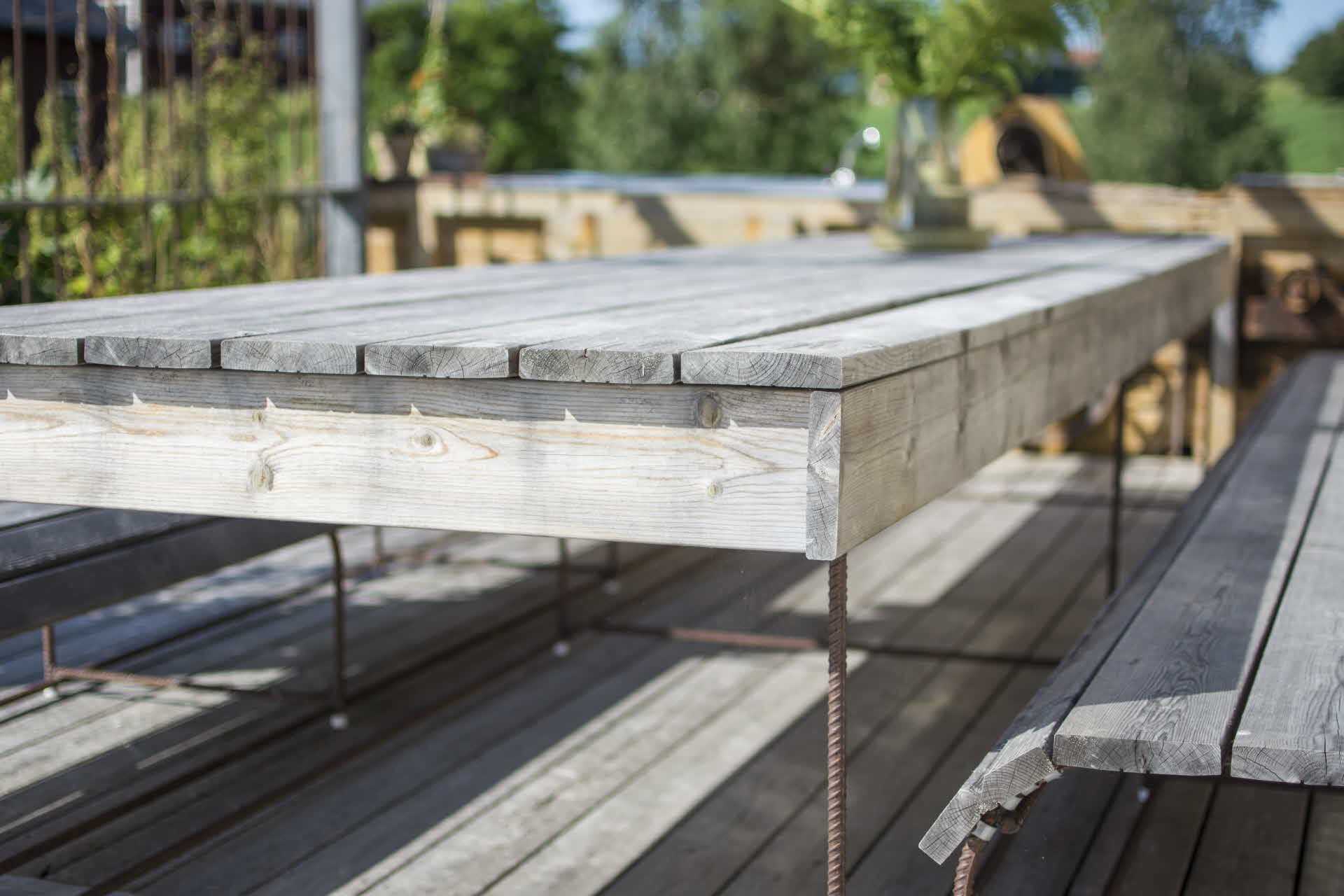
- WOOD
- IMPREGNATED BY NATURE ITSELF
Impregnated by nature itself
- Article
The water-repellent, rot-resistant properties of heartwood make it ideal for manufacturing wood products for outdoor use. But what is heartwood, and how is it formed?
The trunk of most tree species consists of two types of wood: heartwood and sapwood. The outermost part of the trunk consists of sapwood. Its fibres transport water from the roots to the crown of the tree. While the tree is young, the entire trunk is sapwood but, as the tree ages, the inner part of the trunk becomes heartwood. This inhibits the ability of cells to transport water and substances that protect the wood, such as resins and fats, are stored in the fibres. It is this natural impregnation of so-called extractives that makes heartwood more water-repellent and resistant to damp and rot, valuable attributes for wood products that are exposed to the weather.
“This is why heartwood has traditionally been used for windows, cladding and even entire timber buildings, before wood treatments such as pressure impregnation were invented,” says Karin Sandberg, senior researcher at Rise Research Institutes of Sweden.
Sandberg has long experience of studying timber construction technology and the development of wooden structures, especially exterior wood exposed to the elements, such as cladding and facade systems. She managed the project Facade of the City, Swift, Stylish, Smart, which culminated in a facade system in heartwood pine. As well as being resistant to damp and rot, products manufactured in heartwood are also more dimensionally stable, as they do not swell and contract as much, even when the humidity changes around them. The amount of extractives does however vary significantly between different species of tree. For example, oak, pine and larch heartwood are more resistant to rot than other native Swedish tree species.
“That’s true. And larch and pine have roughly the same durability, while spruce is somewhat less durable than pine,” says Sandberg, who explains that heartwood has the same uses today as in the past: outdoor wood products.
“But heartwood is not used as often for facades as it once was, which I suspect is a cost issue. In Sweden, cladding is more commonly made of spruce, which is cheaper than pine,” says Sandberg.
In spruce, it is difficult to distinguish heartwood from dried sapwood, and the sapwood absorbs moisture more slowly than pine sapwood, making it suitable for exterior cladding.
“However, in the vast majority of cases, heartwood is preferable when wood will be exposed to the elements,” explains Sandberg.
Text: Kerstin Olofsson
How pine heartwood is formed
In pines, heartwood begins to form when the tree is 15 to 20 years old, beginning in the centre at the bottom of the trunk then tapering upwards. The older the tree, the greater the percentage of heartwood.
X-rays enchance quality
To manufacture products with a high percentage of heartwood, one needs to know exactly which logs to select and how to saw them. By X-raying logs, the sawmill can turn out products with the exact percentage of heartwood ordered by customers. This what SCA’s Bolster Sawmill does.